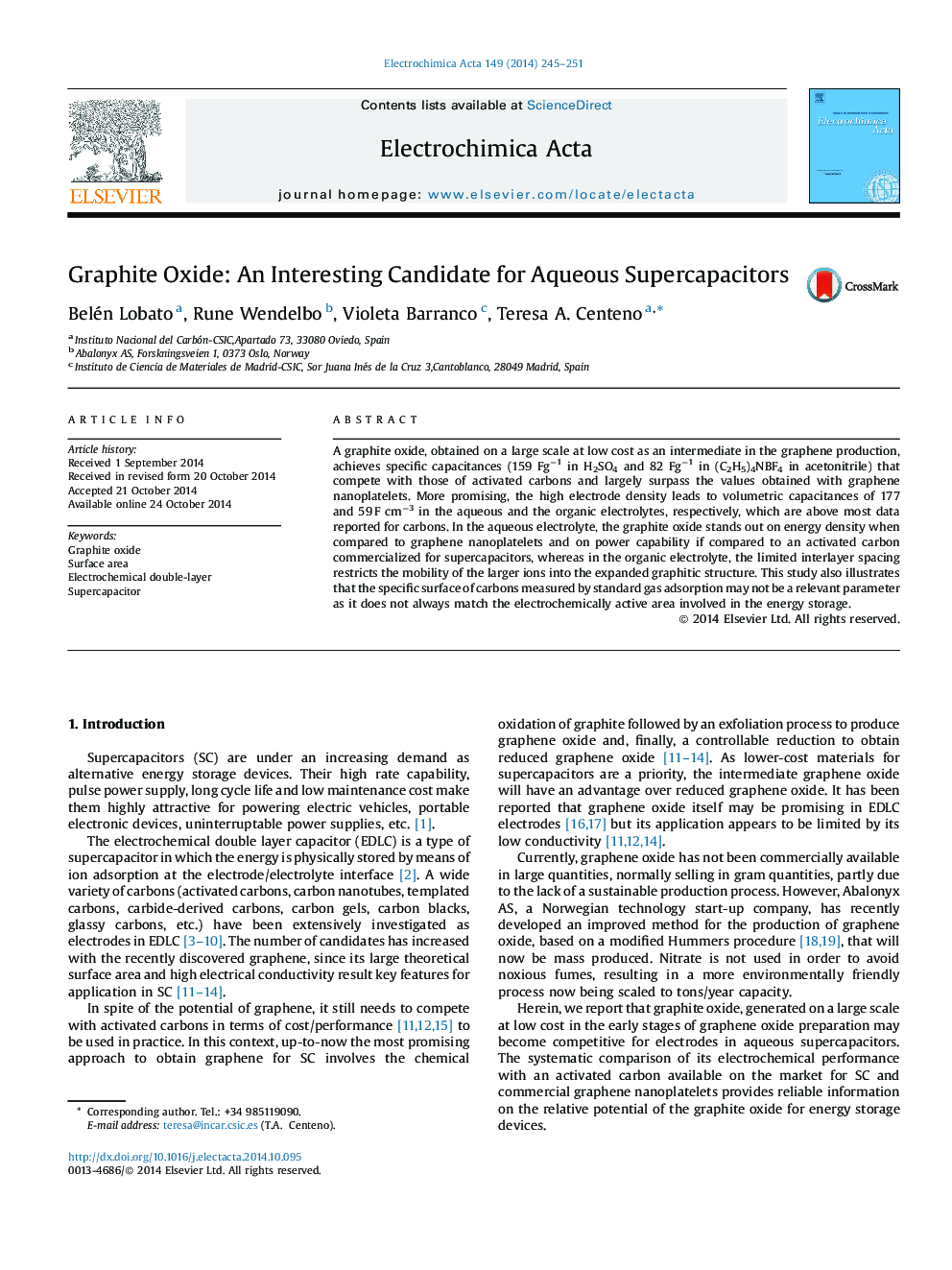| Article ID | Journal | Published Year | Pages | File Type |
|---|---|---|---|---|
| 184958 | Electrochimica Acta | 2014 | 7 Pages |
•The potential of graphite oxide as supercapacitor electrode is explored.•Graphite oxide reaches 177 F/cm3 in H2SO4 and 59 F/cm3 in TEABF4/acetonitrile.•It surpasses the energy stored by graphene nanoplatelets in aqueous H2SO4.•It largely exceeds the power capability of an activated carbon in aqueous H2SO4.•Standard gas adsorption does not provide the active surface in the supercapacitor.
ABSTRACTA graphite oxide, obtained on a large scale at low cost as an intermediate in the graphene production, achieves specific capacitances (159 Fg−1 in H2SO4 and 82 Fg−1 in (C2H5)4NBF4 in acetonitrile) that compete with those of activated carbons and largely surpass the values obtained with graphene nanoplatelets. More promising, the high electrode density leads to volumetric capacitances of 177 and 59 F cm−3 in the aqueous and the organic electrolytes, respectively, which are above most data reported for carbons. In the aqueous electrolyte, the graphite oxide stands out on energy density when compared to graphene nanoplatelets and on power capability if compared to an activated carbon commercialized for supercapacitors, whereas in the organic electrolyte, the limited interlayer spacing restricts the mobility of the larger ions into the expanded graphitic structure. This study also illustrates that the specific surface of carbons measured by standard gas adsorption may not be a relevant parameter as it does not always match the electrochemically active area involved in the energy storage.
Graphical abstractFigure optionsDownload full-size imageDownload as PowerPoint slide
